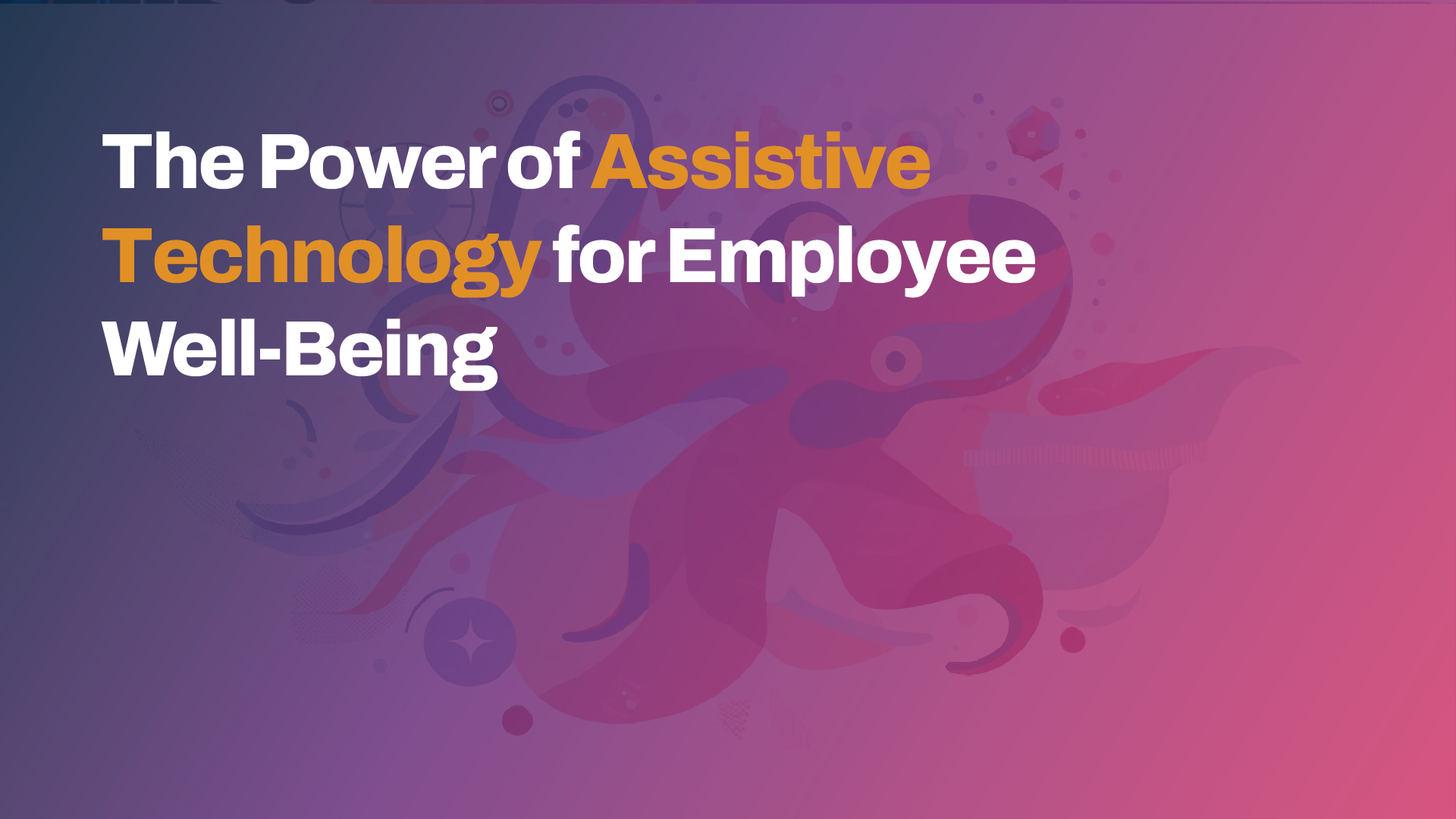Written By: Crosby Cromwell, CGO
Reflecting on the Shift to Remote Work
Sometimes it’s hard to remember a typical workday prior to the pandemic. 2020 feels a lot longer than four years ago, and it is as if two primary camps have formed to voice opinions about what worked, what didn’t work, and how it all informs the future of the workplace. There are the people who are grateful for the massive shifts in structure and the disarray that produced new ways of working, and the people who want all the pieces to move back to the way they were before.
Me? I am grateful for the disruption. At least for the ways in which it forced us to figure out how to work remotely, flexibly, and innovatively. At the heart of the digital workplace, we’ve needed to be able to rely on technology as the thread that runs through everything – through human connection, productivity, data protection, and more.
Disabled employees have stated for decades that technology is a huge part of the answer to improving the workplace, allowing people to work in the ways that best work for them, in order to be more productive for their employers. The continued asks were almost always met with responses that the technological shift would be too costly, too unproductive, too hard to monitor, too impossible. But in 2020, we watched it happen.
There is a growing movement to undo a lot of the flexibility and remote working that was necessary over the past four years – that is worrisome for a lot of reasons – one of my biggest concerns is that companies are going to fail to continue to push for technological innovations that better connect workers and make us more productive – all of us.
The thing I haven’t said yet is that none of this matters as much if the solutions aren’t accessible.
The crux of it all is that companies need to listen to their disabled employees to embed technology solutions that are accessible to as many people as possible, in as many situations as possible – including temporary injuries and proactive and preventive measures.
Advocating for Technological Solutions: The Voice of Disabled Employees
People with disabilities have always been the extreme users of any product. Think of disabled users like Serena Williams is to tennis, or Edmund Hillary was to climbing. The disabled community pushes usability, further than expected or anticipated, sets new limits, and finds innovative ways to make products work for them – and in turn, products that work better for everyone (think texting, voice assistance, curb cuts, automatic doors, and on and on).
When accessibility and universal design are part of the core thinking, you’ll get a better product. Period. If they work brilliantly for disabled employees, they will work brilliantly for everyone, and that is the kind of thinking that needs to be applied to workplace productivity tools.
Think about it– whether it is a person with a permanent disability like a spinal cord injury or a temporary one, like a broken arm – productivity can be maintained and employees can be retained. Going further, these same solutions can be used to prevent repetition injuries caused on the job, like Carpal Tunnel Syndrome. All while lowering attrition, employee turnover, and the costs associated with new hires and training. Simply by seeking out and providing the proper tools, your current workforce can be more productive than it is today. And what we learned from the pandemic is that it’s not too costly, it’s not too complicated, and it is as scalable as it is imperative.
The Importance of Accessibility in Workplace Technology
We will delve into the significance of temporary disabilities in the workplace, explore the distinction between temporary and permanent disabilities, and unveil how assistive technology plays a pivotal role in supporting employees through temporary disabilities.
Temporary disabilities, such as injuries, illnesses, or recovery from surgeries, will alter an individual’s ability to perform their duties in their typical ways of working. Unlike permanent disabilities, which may require long-term accommodations, temporary disabilities can necessitate short-term solutions to facilitate a smooth transition. Understanding this distinction is crucial for employers to tailor their support mechanisms accordingly. While permanent disabilities may require structural adjustments and ongoing accommodations, temporary disabilities often benefit from flexible arrangements and temporary assistive solutions.
Assistive technology serves as a cornerstone in supporting employees through temporary disabilities, empowering them to navigate their work responsibilities with ease and efficiency. From ergonomic keyboards to speech recognition software, assistive technologies offer a myriad of solutions tailored to individual needs. For instance, employees recovering from hand injuries may benefit from voice-controlled devices, enabling them to continue their work tasks without physical strain. Similarly, individuals with temporary vision conditions can utilize screen magnification software to enhance readability and productivity. By integrating assistive technology into the workplace, employers demonstrate their commitment to accessibility and inclusivity, ensuring that every employee has the tools they need to succeed.
Empowering Employees Through Assistive Technology
One of the primary reasons why understanding temporary disabilities is crucial lies in the preservation of talent and expertise within an organization. Each employee brings a unique set of skills and experiences to the table, contributing to the collective success of the company. By acknowledging and accommodating temporary disabilities, employers demonstrate their commitment to retaining valuable talent, thereby fostering loyalty and engagement among their workforce.
Fostering a culture of understanding and proactive support for temporary disabilities promotes diversity and innovation within the workplace. By embracing different perspectives and experiences, teams can collaborate more effectively, leading to enhanced problem-solving and creativity. Inclusivity isn’t just a moral imperative—it’s also a strategic advantage that drives organizational success in today’s dynamic business landscape. By prioritizing the well-being of your workforce and leveraging assistive technology solutions, employers not only cultivate a culture of care but also lay the foundation for sustained success and innovation.
Get In Touch
Our team can help you learn more about integrating with Cephable.

